DLM11SN900HZ2
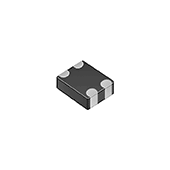
Noise suppression technologies/case study introduction (Automotive)
There are many kinds of problematic noise that are emitted from the devices installed in vehicles.
The examples of the actions taken to suppress noise described here deal with the noise that is radiated from the USB signal cables.

※The EUT here is not a product intended to be installed in a vehicle, but as the noise conditions are similar, a device for general applications is used instead.
※The tests have been carried out in both the USB 2.0 and USB 3.0 modes.
EUT:Equipment Under Test
When interfaces compliant with the USB 3.0 standard are to be operated as equivalent to the USB 2.0 standard, signal lines used for USB 2.0 are used. As USB 2.0 signal lines have both transmission (TX) and reception (RX) functions, common mode choke coils are inserted into these lines.
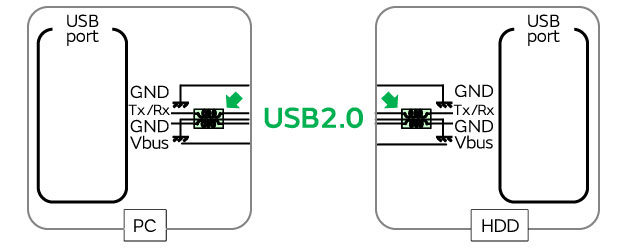
Common mode choke coil in TX/RX line
DLM11SN900HZ2
or
DLW21SZ900HQ2
inserted
Click here for details of the measurement conditions.
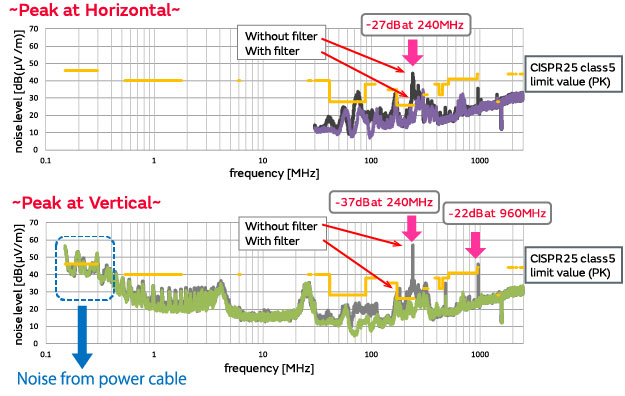
By adding a common mode choke coil (DLM11SN900HZ2), the noise was successfully reduced(maximum reduction of approx. 37 dB at a vertically polarized wave frequency of 240 MHz).
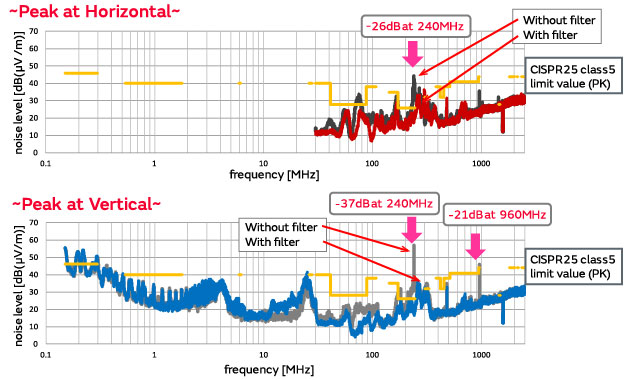
By adding a common mode choke coil (DLW21SZ900HQ2), the noise was successfully reduced(maximum reduction of approx. 37 dB at a vertically polarized wave frequency of 240 MHz).
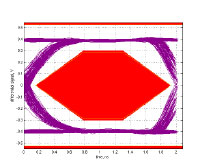
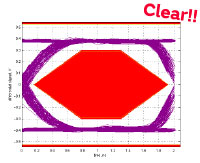
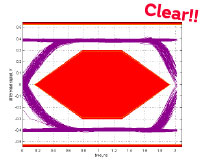
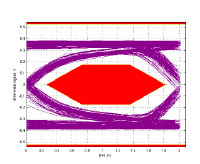
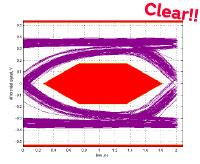
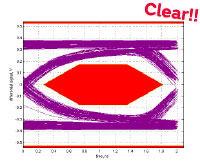
In the USB 3.0 SuperSpeed mode, separate signal lines are used for TX and RX, unlike in the 2.0 mode.
Here, a common mode choke coil is inserted into the TX signal line.
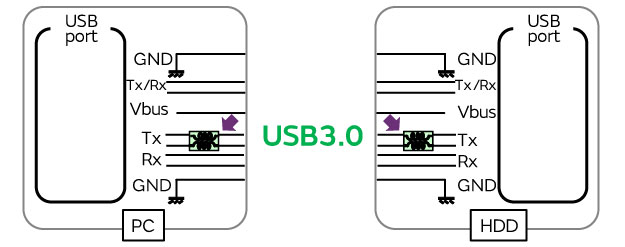
Common mode choke coil in TX signal line
DLM11SN900HZ2
or
DLW21SZ900HQ2
inserted
Click here for details of the measurement conditions.
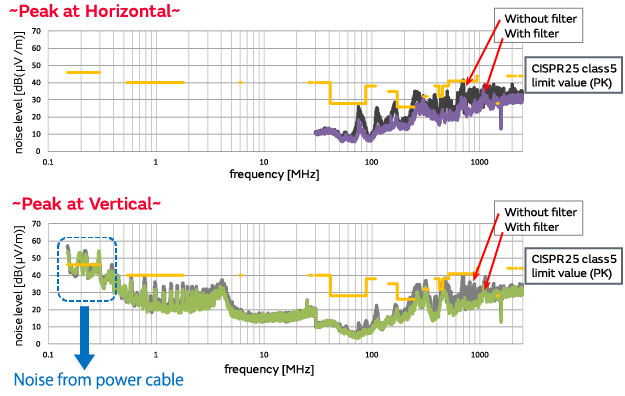
By adding a common mode choke coil (DLM11SN900HZ2), the noise was successfully reduced.
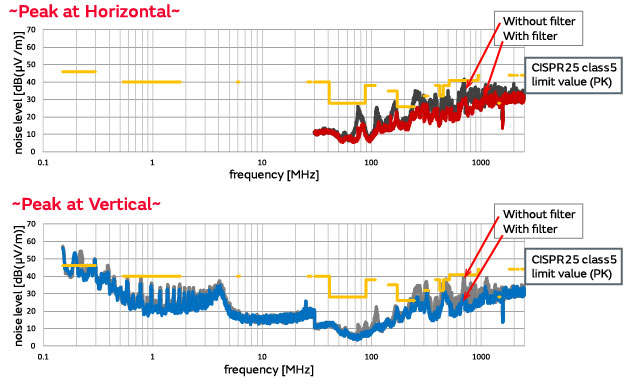
By adding a common mode choke coil (DLW21SZ900HQ2), the noise was successfully reduced.
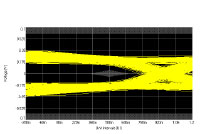
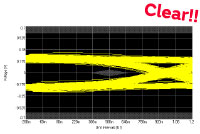
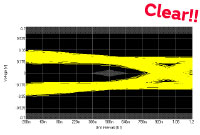
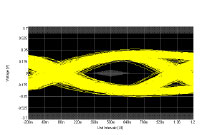
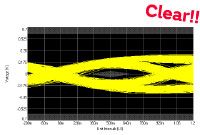
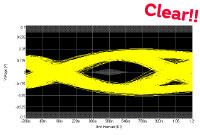
Communication in the USB 2.0 and USB 3.0 modes was initiated between a PC and hard drive and, in an environment complying with the CISPR25 standard, the noise radiated from the USB cables was evaluated.
As a result, it was found under the condition of using no filters that noise was radiated from the USB cables during both USB 2.0 and USB 3.0 communication.
A high level of harmonic noise—approx. 57 dB (µV/m)—was found at a vertically polarized wave frequency of 240 MHz during USB 2.0 communication.
As a measure taken to suppress the noise, the following components were added to the signal lines:
In this way, it was verified that the noise in both the USB 2.0 and USB 3.0 modes was successfully reduced.
In the USB 2.0 mode, the noise was successfully reduced by a maximum of approx. 37 dB (at a vertically polarized wave frequency of 240 MHz).
Selection chart for signal lines
Selection chart for power lines